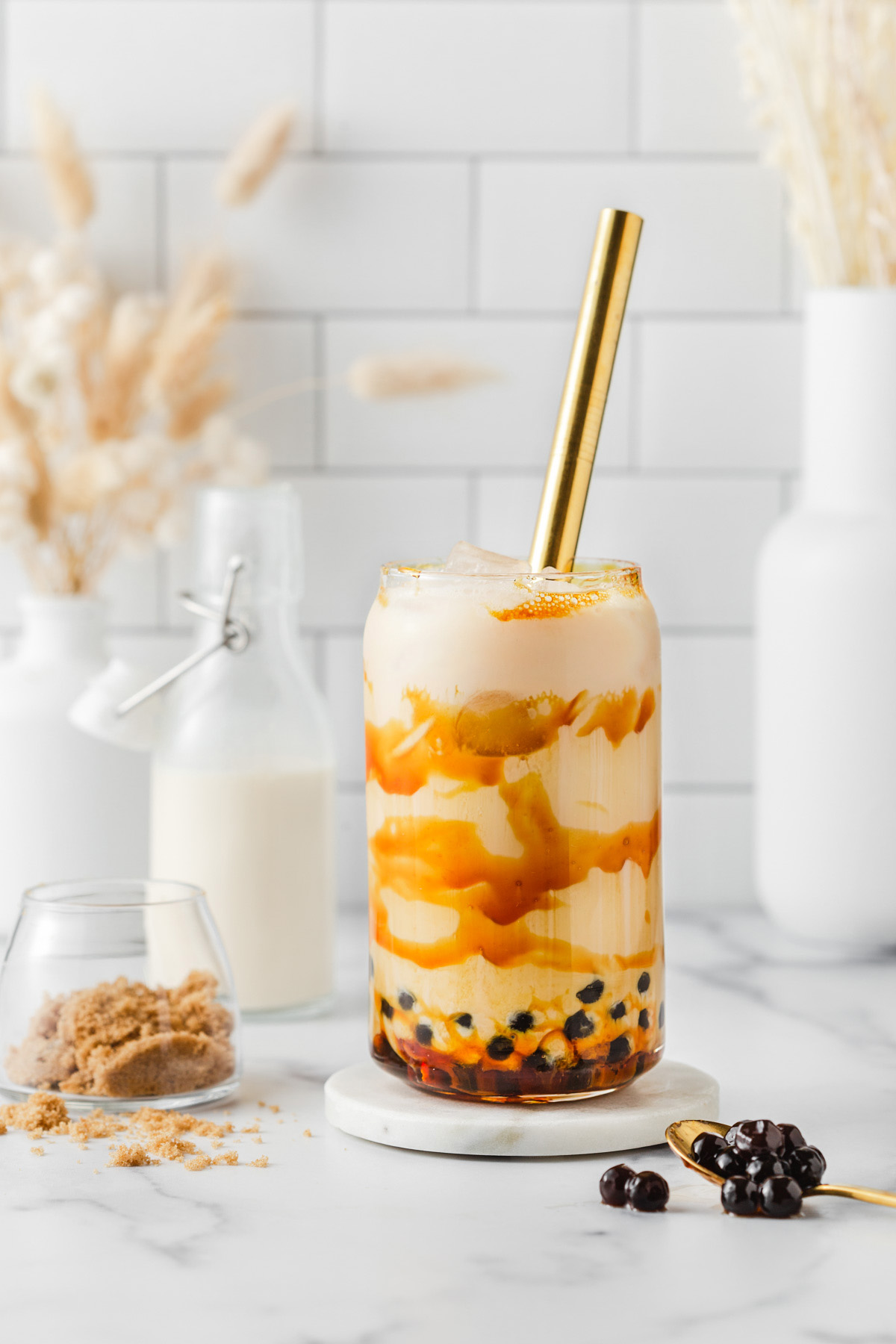
Bubble tea (also known as pearl milk tea, bubble milk tea, tapioca milk tea, or boba tea or boba; is a tea-based drink that originated in Taiwan in the early 1980s. It most commonly consists of tea accompanied by chewy tapioca balls ("boba" or "pearls"), but it can be made with other toppings as well. Bubble tea has many varieties and flavors, but the two most popular varieties are black pearl milk tea and green pearl milk tea ("pearl" signifies the tapioca balls at the bottom).
Bubble teas fall under two categories: teas without milk and milk teas. Both varieties come with a choice of black, green, or oolong tea as the base. Milk teas usually include condensed milk, powdered milk, almond milk, soy milk, coconut milk, 2% milk, skim milk, or fresh milk. The oldest known bubble tea drink consisted of a mixture of hot Taiwanese black tea, tapioca pearls (Chinese: 粉圓; pinyin: fěn yuán; Pe̍h-ōe-jī: hún-îⁿ), condensed milk, and syrup (Chinese: 糖漿; pinyin: táng jiāng) or honey. Now, bubble tea is most commonly served cold. The tapioca pearls that make bubble tea so unique were originally made from the starch of the cassava, a tropical shrub known for its starchy roots which was introduced to Taiwan from South America during Japanese colonial rule. Larger pearls (Chinese: 波霸/黑珍珠; pinyin: bō bà/hēi zhēn zhū) quickly replaced these. Today, there are some cafés that specialize in bubble tea production.Some cafés use plastic lids, but more authentic bubble tea shops serve drinks using a machine to seal the top of the cup with heated plastic cellophane. The latter method allows the tea to be shaken in the serving cup and makes it spill-free until a person is ready to drink it. The cellophane is then pierced with an oversize straw, now referred to as a boba straw, which is larger than a typical drinking straw to allow the toppings to pass through. Due to its popularity, bubble tea has inspired a variety of bubble tea flavored snacks such as bubble tea ice cream and bubble tea candy. The high increase of bubble tea demand and its related industry can provide opportunities for possible market expansion. The market size of bubble tea was valued at $2.4 billion in 2019 and is projected to reach $4.3 billion by the end of 2027. Some of the largest global bubble tea chains include: Chatime, CoCo Fresh Tea & Juice and Gong Cha.
Milk and sugar have been added to tea in Taiwan since the Dutch colonization of Taiwan in 1624–1662. There are two competing stories for the discovery of bubble tea. The Hanlin Tea Room of Tainan claims that bubble tea was invented in 1986 when teahouse owner Tu Tsong-he was inspired by white tapioca balls he saw in the local market of Ah-bó-liâu (鴨母寮, or Yamuliao in Mandarin) . He later made tea using these traditional Taiwanese snacks. This resulted in what is known as "pearl tea". Another claim for the invention of bubble tea comes from the Chun Shui Tang tea room in Taichung. Its founder, Liu Han-Chieh, began serving Chinese tea cold after she observed coffee was served cold in Japan while on a visit in the 1980s. The new style of serving tea propelled his business, and multiple chains serving this tea were established. The company's product development manager, Lin Hsiu Hui, said she created the first bubble tea in 1988 when she poured tapioca balls into her tea during a staff meeting and encouraged others to drink it. The beverage was well received by everyone at the meeting, leading to its inclusion on the menu. It ultimately became the franchise's top-selling product.
This website was created by Sharice Macafity